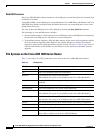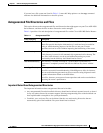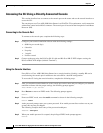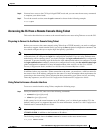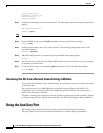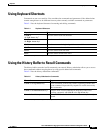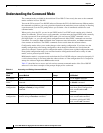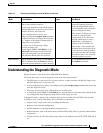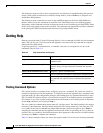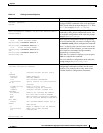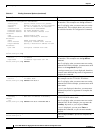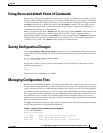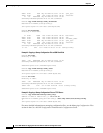
2-6
Cisco ASR 1000 Series Aggregation Services Routers Software Configuration Guide
OL-16506-17
Chapter 2
Understanding the Command Mode
Understanding the Command Mode
The command modes available in the traditional Cisco IOS CLI are exactly the same as the command
modes available in Cisco IOS XE.
You use the CLI to access Cisco IOS XE software. Because the CLI is divided into many different modes,
the commands available to you at any given time depend on the mode that you are currently in. Entering
a question mark (?) at the CLI prompt allows you to obtain a list of commands available for each
command mode.
When you log in to the CLI, you are in user EXEC mode. User EXEC mode contains only a limited
subset of commands. To have access to all commands, you must enter privileged EXEC mode, normally
by using a password. From privileged EXEC mode, you can issue any EXEC command—user or
privileged mode—or you can enter global configuration mode. Most EXEC commands are one-time
commands. For example, show commands show important status information, and clear commands
clear counters or interfaces. The EXEC commands are not saved when the software reboots.
Configuration modes allow you to make changes to the running configuration. If you later save the
running configuration to the startup configuration, these changed commands are stored when the
software is rebooted. To enter specific configuration modes, you must start at global configuration mode.
From global configuration mode, you can enter interface configuration mode and a variety of other
modes, such as protocol-specific modes.
ROM monitor mode is a separate mode used when the Cisco IOS XE software cannot load properly. If
a valid software image is not found when the software boots or if the configuration file is corrupted at
startup, the software might enter ROM monitor mode.
Table 2-3 describes how to access and exit various common command modes of the Cisco IOS XE
software. It also shows examples of the prompts displayed for each mode.
Table 2-3 Accessing and Exiting Command Modes
Command
Mode Access Method Prompt Exit Method
User EXEC Log in.
Router>
Use the logout command.
Privileged
EXEC
From user EXEC mode, use the enable EXEC
command.
Router#
To return to user EXEC mode, use
the disable command.
Global
configuration
From privileged EXEC mode, use the
configure terminal privileged EXEC
command.
Router(config)#
To return to privileged EXEC
mode from global configuration
mode, use the exit or end
command.
Interface
configuration
From global configuration mode, specify an
interface using an interface command.
Router(config-if)#
To return to global configuration
mode, use the exit command.
To return to privileged EXEC
mode, use the end command.



